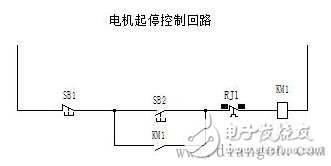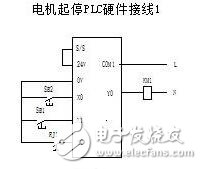Many small partners are confused about the difference between relay interlock control and PLC control, as they share many similarities. Today, I'll explain the key differences and how they function in real-time applications.
If you compare a relay-based control circuit with a PLC-based one, you'll notice that they operate in fundamentally different ways. In a relay interlock system, such as the one shown in Figure 1, each control loop works independently. When any start or stop button is pressed, the corresponding contactor will either engage or disengage. For simplicity, we’re ignoring the time it takes for the contactor to actuate. In essence, this system operates in parallel—each input is processed immediately, similar to how a computer handles interrupts. This means that any input signal is responded to instantly without delay.

Now consider a PLC control system, as illustrated in Figure 2. The operation of a PLC follows a specific sequence: it first reads the inputs, then processes the program logic from top to bottom and left to right, and finally updates the outputs. This process is driven by a clock signal and runs sequentially. The entire cycle—input, processing, output—is repeated continuously at high speed. Because of this fast scan rate, we rarely notice the sequential nature of the operation. In most cases, the PLC appears to be running in real-time, updating outputs continuously unless interrupted by a special program.

It's important to understand that while both systems can perform similar tasks, their underlying mechanisms are quite different. Not all input signals are handled equally well by a PLC. For example, high-frequency signals like those from a counter may not be fully captured if the PLC isn’t equipped with a high-speed input interface. In such cases, you need to use a dedicated high-speed counter module. However, for standard input signals—like pushbuttons or switches—a regular PLC is more than sufficient.
Take, for instance, an FX2 PLC with a 1K-line program. If I use an IDEC brand start button for an automatic program, even if I press it for just a fraction of a second, the PLC still recognizes the signal and executes the program correctly. This is because modern PLCs operate at very high speeds, and the CPU’s performance continues to improve. While most control tasks can be handled through standard programs, certain specialized applications may require unique instructions or hardware interfaces. But for the majority of industrial applications, a standard PLC setup works perfectly fine, provided you design your program carefully and don’t overlook any critical details.
Intel Nuc I5,Intel Nuc 11 I5,I5 Mini Pc,Intel Nuc 10 I5
Guangdong Elieken Electronic Technology Co.,Ltd. , https://www.elieken.com